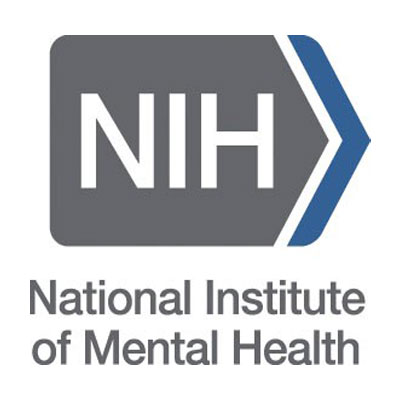
Panic Disorder
What Is a Panic Attack?
Our bodies and brains are equipped with a powerful alarm system. When our brains detect an immediate threat to our safety, the alarm goes off. Like any good alarm, it’s not subtle—your heart pounds, your breath quickens, your body prepares for action.
When there’s a real and obvious threat, we don’t experience panic; we’re focused on responding to the threat. We’ll generally do one of three things: fight, flee, or freeze (which is why the response is often called “fight or flight”).
However, there are times when our alarm goes off and there’s no obvious reason. Maybe you’re just driving, or getting on a plane, or having an MRI, or even sleeping in your bed. Suddenly a wave of panic rushes over you, and your body manifests the physical symptoms: Your heart may pound or race, you might sweat, it could feel like you’re not getting enough air, and you might shake or feel dizzy, among other reactions.
You’ll probably have cognitive symptoms, too, like an intense sense of threat and needing to escape, or fearing you’re going to “lose control” or “go crazy.” It’s also not uncommon to have strange sensations like feeling disconnected from your body or feeling like things aren’t real.
Whatever your particular symptoms, a panic attack is an extremely uncomfortable experience—and for good reason: An alarm that was easily missed or ignored would be a poor one. Good alarms get our attention.
The majority of people will have at least one panic attack in their lifetime, and having a panic attack in and of itself is not considered a disorder. Other symptoms have to be present.
[Get my free e-guide, “10 Ways to Manage Stress and Anxiety Every Day“]
What Is Panic Disorder?
Panic disorder is more likely when we have certain reactions to our panic attacks. These reactions include:
- Worrying about the next attack. You might live in dread of the next panic attack, fearing when and where it will strike.
- Fear about what the attacks mean. In panic disorder we often fear that the attacks signal something terrible—maybe a heart attack, or a sign that we’re going to lose control in some way.
- Avoiding activities or places where an attack is likely. Naturally we want to avoid unpleasantness if at all possible, and the avoidance in panic disorder can cause major disruptions in our lives. For example, you might stop driving over the biggest bridges if you tend to panic on them, and then might stop driving on bridges altogether, and avoiding unfamiliar roads because you might encounter a terrifying bridge. Even if you keep doing your normal activities, you might do them differently—maybe by having someone go with you, or only driving at certain times, or always checking traffic before taking a route you fear. If your panic happens in enclosed spaces like elevators, you might always take the stairs. We often seek treatment for panic disorder when it has gotten in the way of living the life we want.
What Causes Panic?
Panic is often triggered by some kind of unusual or unexpected physical sensation. My heart might pound for no reason I’m aware of, or my arm might feel numb, or I might suddenly have a bizarre feeling that reality is “bending.” Panic can also start with a sense of being trapped: in an elevator, in a crowd, in the grocery line with a cart full of groceries, on a highway, in the middle of a row at the movie theater, etc.
Whatever the initial trigger, our reaction to it leads to more anxiety, which tends to strengthen the original trigger. For example, if my heart pounds and I think, “Oh no, I’m having a heart attack!” my heart will probably pound faster. Thus what might have started as a relatively mild symptom can turn into a full alarm, based on how my mind interprets the symptoms.
In a similar way, the thought “I’m trapped!” can lead to an escalating feeling of needing to escape, which can make the feeling of being trapped even stronger, and the cycle continues.
Over time, the panic attacks con become more easily triggered. One of the causes of this sensitization to panic is that we tend to become really good at noticing when our triggers are present. We’ll likely be on the lookout for any physical signs of panic. We’ll know when we’re in a situation where we’re prone to panic, and we might anticipate for days or weeks an upcoming situation in which we panicked in the past. All this vigilance and dread also raises our level of anxiety, making us more likely to have a panic attack.
Furthermore, avoidance of the situations we fear gets us out of the habit of facing them, and only increases our fear of them. Not facing our fears makes them grow in our minds, as our brains interpret the avoidance as evidence that what we avoid must actually be dangerous. Avoidance can be powerfully habit-forming, since we get a sense of relief from not facing our fears. Treatment will require breaking the habit of avoidance.
Cognitive Behavioral Therapy for Panic Disorder
There are several powerful tools in CBT for panic disorder.
- Breath Focus. The breath is intimately connected to our nervous systems, and in states of high anxiety we tend to breathe in ways that make the anxiety worse. We can practice slowing down the breath and watching it, much as we would in meditation, so that we can use our focus on the breath to help us manage challenging situations.
- Examining Our Thoughts. The things we believe about panic tend to strengthen it, such as believing it’s dangerous to panic or that we could “lose it” if a panic attack gets too intense. By noticing where our minds go when our anxiety is high, we can start to question whether our thoughts make sense. If we find that at times our thoughts aren’t accurate, we can start to develop a different relationship with them, not believing everything we think. Stepping away from the sense of catastrophe can break up the cycle of panic.
[The Secret Behind Panic and How to Escape It on Psychology Today blog] - Facing Physical Symptoms. We can become sensitized to physical sensations when they’re associated with panic. For instance, we might start to fear every time our heart rate accelerates, or any time we feel a bit dizzy. We can lower our reactivity to these sensations by bringing them on deliberately. By getting used to the sensations, we no longer are so afraid of them and they’re less likely to lead to panic.
- Facing Feared Situations. Nothing rewires the brain like facing our fears. The challenge, of course, is that it can be terrifying. A central part of CBT for panic is coming up with a list of situations that can trigger anxiety and panic, and then facing them systematically from easier to harder. When you start doing your activities you’ll use the skills you’ve been practicing—breathing, challenging your thoughts, and facing physical symptoms—to help you meet the challenge. Most people find that with repeated practice it gets easier to face our fears.
- Accepting Anxiety and Panic. Perhaps the most powerful tool in managing panic is approaching it with an attitude of acceptance. A lot of panic is driven by our efforts not to panic, and to avoid feeling anxious. These efforts tend to have the paradoxical effect of increasing our tension and anxiety, and leading to more panic. When we lean into our anxiety and accept the possibility of panic, it loosens its grip. Often we find that the more willing we are to panic, the less likely we are to panic.
Additional Resources
Panic Disorder Information from NIMH
The National Institute for Mental Health provides information on what Panic Disorder is, what the risk factors are, and what kinds of treatments are available. They also describe how to find a clinical trial that you might be eligible for.
Panic Disorder Information from APA
Panic Disorder Information from APA
Insomnia is a common sleep disorder that can make it hard to fall asleep, hard to stay asleep, or cause you to wake up too early and not be able to get back to sleep. You may still feel tired when you wake up. Insomnia can sap not only your energy level and mood but also your health, work performance and quality of life.
Panic Disorder Information from ADAA
The Anxiety and Depression Association of America provides information on what panic disorder is and how it’s treated. The ADAA website also hosts a “Find Help” section with a “Find a Therapist” directory, links to support groups, information on treatment by phone, Internet, or email, a Mental Health Apps page, and a list of self-help books and other resources, as well as information for professionals.


